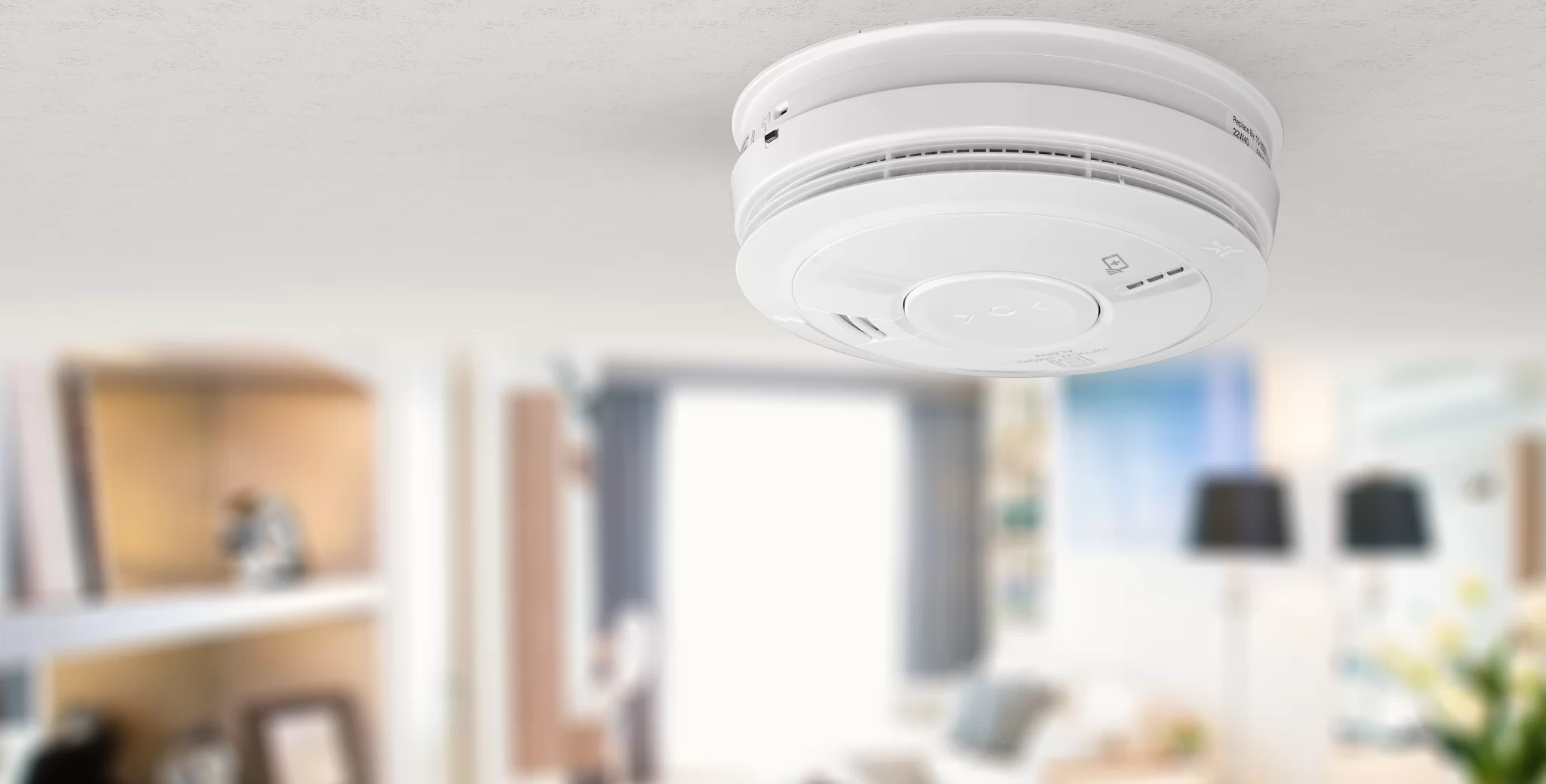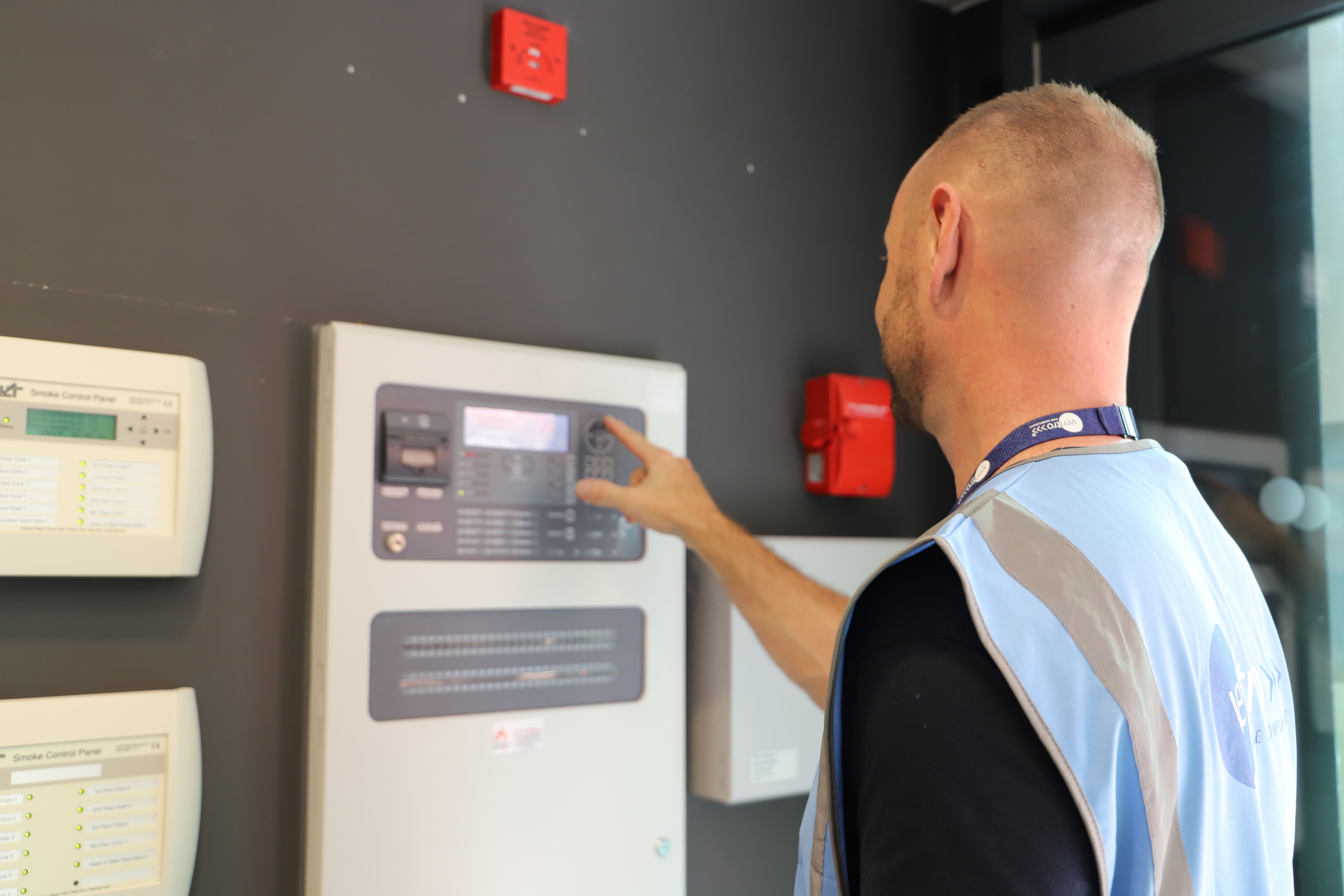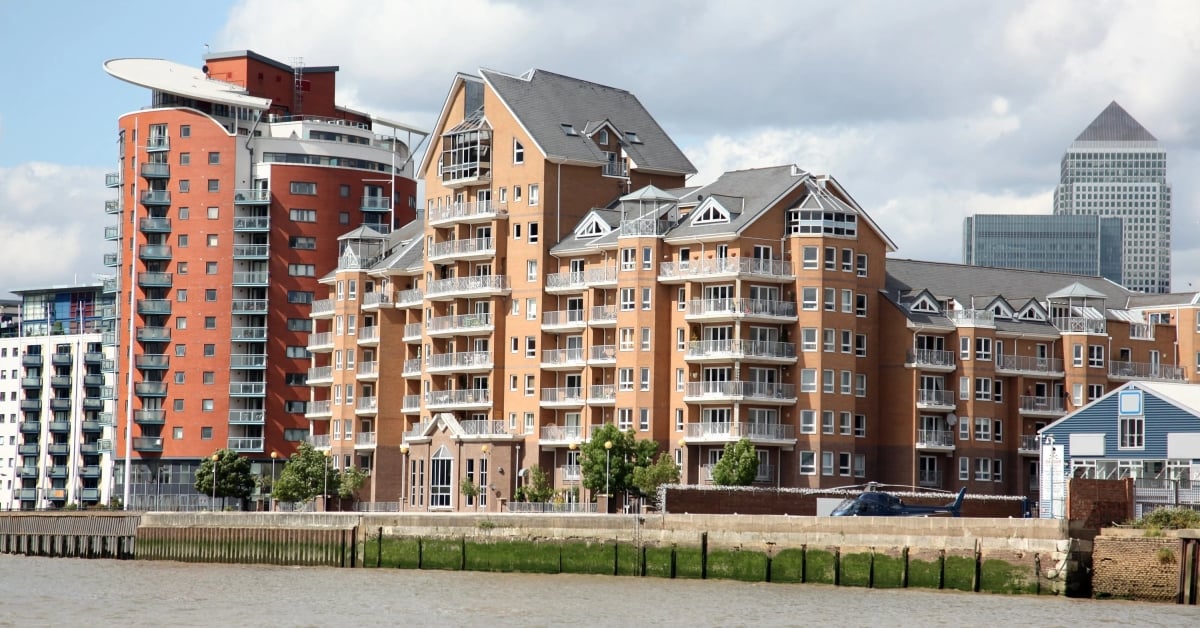Fire Alarm Systems CPD: Ensuring Safety and Compliance Q&A

In our recent CPD, Fire Alarm Systems CPD: Ensuring Safety and Compliance, we explored the key regulations, best practices, and practical considerations surrounding fire alarm systems. From understanding BS 5839 to addressing fire safety challenges in various building types, the session offered valuable insights for professionals looking to ensure their systems are compliant and effective.
While we didn’t have time to run our usual live Q&A session during the event, we wanted to ensure that your questions didn’t go unanswered. In this blog, we’ve gathered and answered your questions from the webinar. Whether you attended or are catching up now, we hope this Q&A provides clarity and guidance on maintaining fire safety excellence.
1. If a property is purely electric and there is no gas - is the landlord required to still have a CO alarm installed at the property?
In general, if a property is purely electric and has no gas supply or gas appliances, a carbon monoxide (CO) alarm is typically not required by law, as CO is produced by the incomplete combustion of fuels such as gas, oil, coal, or wood.
In the UK, landlords are required to install CO alarms in any room where there is a fixed combustion appliance, such as a gas boiler, or a wood-burning stove. If the property is entirely electric with no fuel-burning appliances, a CO alarm would not be legally necessary.
2. Would HMOs be covered under part 6?
Yes, Houses in Multiple Occupation (HMOs) are covered by BS 5839-6, which provides guidance on fire detection and alarm systems for domestic properties. In addition to Part 6, BS 5839-1 may also apply in certain circumstances, depending on the size, complexity, and nature of the HMO.
3. What level of coverage is required for holiday lets? the message is conflicting depending on where you look.
The level of fire detection required for holiday lets varies depending on the type of accommodation. Single holiday homes (e.g., Airbnb's or cottages) are generally treated like domestic properties under BS 5839-6, however they do require smoke and heat alarms in key areas such as bedrooms and living rooms. Larger holiday complexes (e.g. Butlins or holiday parks) may require more comprehensive systems under BS 5839-1, similar to commercial properties. Caravans or mobile homes also follow domestic fire safety standards but may need additional measures. Local regulations may further affect requirements. If you have a specific type of holiday let in mind, we can provide more precise guidance.
4. With the development of AI ....... where do you see the development of domestic systems in the future?
With the development of AI, the future of domestic fire alarm systems is likely to become more intelligent and proactive. AI-driven systems could integrate with smart home technology to not only detect fires more accurately, but also predict and prevent potential fire risks by analysing patterns, such as appliance usage or environmental factors. These systems may offer real-time monitoring, automatically alert emergency services, and provide personalised safety recommendations based on individual household behaviours. Additionally, AI could enable advanced self-testing and maintenance features, reducing the chances of false alarms and ensuring compliance with safety standards.
5. Are Battery driven devices with a 10-year life span for BS5839-6 considered compliant?
Yes, battery-driven devices with a 10-year lifespan can be considered compliant with BS 5839-6, depending on the grade of the alarm system. Grade D1 alarms, for example, require mains-powered alarms with a tamper-proof, sealed battery backup designed to last for 10 years, while Grade D2 systems allow for replaceable batteries. The lifespan of the battery should meet or exceed the manufacturer's recommendations, and periodic maintenance is advised. It's important to follow the specific manufacturer's guidelines for battery replacement, as some alarms may require batteries to be replaced more frequently for optimal safety.
6. When a fire alarm has been disabled even using software, is it necessary to test the detectors when they are brought back online?
While it is considered good practice to test fire alarms after they have been disabled and then reactivated, particularly if they have been disabled using software or other means, there is no specific UK legislation that mandates this. However, ensuring that detectors are functioning properly after reactivation is crucial for maintaining safety and compliance with best practices outlined in fire safety guidance, such as those from BS 5839-1 or BS 5839-6. Regular testing helps confirm that the system is operational and can effectively respond in an emergency.
7. Can you point me in the direction of the enhanced guidelines for communicating alarms?
For enhanced guidelines on communicating alarms, you can refer to the British Standard BS 5839-9. This standard provides detailed recommendations on alarm systems used in Alarm Receiving Centres (ARC), including how to communicate alarms effectively. BS 5839-9 outlines best practices for ensuring reliable and accurate transmission of alarm signals, which is crucial for effective emergency response. Additionally, checking with relevant industry bodies or organisations involved in fire safety, such as the National Fire Chiefs Council (NFCC) or The Fire Protection Association (FPA), can offer further guidance and updates on communication standards and protocols.
8. In reference to the requirement of landlords under the CO and Smoke detector regs [to provide a detector on every floor level of rented accommodation] this would be an LD3 system at best. Table 1 of BS5389 part 6 states that the minimum standard in (long term) rented is LD2, which includes kitchen and other risk rooms, such as the lounge. To comply with the BS and perhaps any enforcement, the landlord should install an LD2 not LD3. The CO regs seem to be in conflict here. What would be your thoughts on this?
The fire and rescue service do not have enforcement powers for long term rented accommodation, other than for prohibition, which is rarely applied. The local housing authority would be the enforcing authority. For holiday lets the standard is Grade D1 LD1, so an important difference which is not widely understood - 'making your small paying guest accommodation from fire safe' guide March 2023.
As fire protection specialists, we advocate for the highest level of safety to ensure comprehensive protection for all types of accommodation. This means implementing advanced systems tailored to the specific risks present in each property. For instance, even in properties without gas appliances, installing smoke alarms and heat detectors is crucial for early fire detection. Carbon monoxide (CO) detectors are essential if there are any potential sources of CO, such as solid fuel stoves or fireplaces, as CO is a silent and deadly threat. We emphasise a layered approach to safety: combining smoke alarms to detect fires, heat detectors for kitchen areas, and CO detectors where applicable, ensures that each potential hazard is addressed appropriately. The goal is to not only meet legal requirements but to exceed them, providing the highest level of safety for occupants.
9. Does a Part 1 System need to be set up on an ARC? what would determine this alarm system in place, evac plan or occupants.
Whether a Part 1 fire alarm system needs to be set up with an Alarm Receiving Centre (ARC) depends on several factors, including the presence of a responsible person (RP) on site and the building's specific fire safety needs. In buildings where an RP is present at all times, they would typically manage fire alarms and emergency responses directly. However, if the building lacks a constant RP, or if it is a larger or more complex facility where immediate response is crucial, integrating the fire alarm system with an ARC can enhance safety by ensuring that alarms are promptly received and acted upon by a dedicated monitoring service. The decision to set up an ARC should consider the building's occupancy, the evacuation plan, and the potential risks. For tailored advice, providing details about your building's specific circumstances will help in offering precise recommendations.

10. Are six months and annual testing by a competent person (alarm engineer) enough to remain compliant? I.e. without monthly checks being carried out locally.
For a Part 1 fire alarm system, which is typically used in commercial or larger residential properties, compliance requires more rigorous testing protocols than for Part 6 systems. While having a competent person (such as a qualified alarm engineer) perform testing every six months and annually is beneficial, it does not fully meet compliance requirements. According to BS 5839-1, Part 1 systems must be tested on a weekly basis to ensure they are functioning correctly. This frequent testing is essential to detect any issues promptly and maintain system reliability. Monthly checks or inspections at a local level are also recommended to ensure ongoing operational readiness and to address any minor faults that might arise between professional servicing. Failure to adhere to these stringent testing requirements could compromise safety and breach regulatory standards.
11. Is there now definitive guidance on the use of plastic plugs?
Plastic Rawl plugs (wall plugs) are generally not considered suitable for meeting wiring regulations concerning fire safety, especially in areas where fire-rated installations are required. The UK wiring regulations, specifically BS 7671 and the related BS 5839-1 (which covers fire detection and alarm systems), emphasise the importance of ensuring that wiring systems remain intact in the event of a fire.
Here are the key points to consider:
- Fire Resistance of Fixings: The wiring regulations require that fire-resistant cables and accessories must remain secured during a fire. Plastic Rawl plugs can melt or deform under high temperatures, which could cause the wiring or cable containment system to fall, potentially blocking fire escape routes or disabling fire safety systems.
- Metallic Supports: In fire-critical areas (such as escape routes or areas where cables provide power to fire alarms or emergency lighting), metallic fixings or fire-resistant clips are required to hold cables securely in place. Metal anchors or metal fire-rated clips are typically recommended for securing cables to prevent them from becoming loose or falling during a fire.
- Amendment 3 to BS 7671: Introduced in 2015, this amendment specifically required that wiring systems should not be solely supported by non-metallic fixings in areas where they could pose a hazard during a fire. This rule was introduced to prevent cables from collapsing in fire conditions, ensuring safer evacuation routes and emergency system reliability.
In short:
For fire safety compliance, plastic Rawl plugs should not be used in installations that require fire-resistant supports. Instead, metal, or fire-resistant fixings should be used to comply with UK wiring regulations.
12. Do health centres and hospitals come under Part 1 or part 6? They are commercial but often involve sleeping risks.
Health centres and hospitals are covered under BS 5839-1, which provides guidelines for fire detection and alarm systems in non-domestic buildings, including those with sleeping risks. This standard applies to commercial and healthcare premises, mandating advanced fire alarm systems with zoned detection, integration with emergency lighting, and tailored evacuation plans to protect patients and staff. BS 5839-6, which is for domestic properties, does not apply to these types of facilities.
13. Does the BS5839 design for smoke detector coverage apply to locating smoke detectors in domestic/holiday premises i.e. requirement for a smoke detector on each side of a beam that is more than 10% of the height of the room?
Yes, the design guidelines for smoke detector coverage outlined in BS 5839 do apply to both domestic and holiday premises, including the requirement to place detectors appropriately around architectural features such as beams. According to BS 5839-6 (for domestic properties) and BS 5839-1 (for non-domestic and commercial properties), if a beam or similar obstruction is more than 10% of the room's height, it should be treated as a wall for the purposes of smoke detector placement. This means that smoke detectors should be installed on each side of the beam to ensure that smoke is detected effectively regardless of the obstruction. This guideline helps to ensure that smoke alarms provide comprehensive coverage and early detection throughout the entire room, minimising the risk of undetected fires.
14. Could you confirm if an existing fire alarm system would need upgrading if there are elements missing, such as strobe lighting etc.
Whether an existing fire alarm system needs upgrading to include elements such as strobe lighting depends on the results of a risk assessment and the evolving needs of the premises. BS 5839-1 and BS 5839-6 stipulate that fire alarm systems should be tailored to the specific risks and requirements of a building. For example, if a risk assessment identifies that additional features like strobe lights are necessary to adequately alert occupants, especially in high-risk areas or for individuals with hearing impairments, then an upgrade would be appropriate. The system should be reviewed periodically and updated as necessary to ensure it meets current safety standards and effectively addresses all potential hazards. If you provide more details about the specific situation, we can offer more tailored advice.
15. Do communal alarms in residential blocks need to be monitored weekly?
For communal alarms in residential blocks, the monitoring requirements depend on the type of fire alarm system in place. BS 5839-1, which covers non-domestic and communal residential properties, mandates that fire alarm systems, including communal alarms, should be tested weekly to ensure proper operation and compliance. This standard ensures that any faults are detected and addressed promptly. On the other hand, BS 5839-6, which applies to domestic properties, does not require weekly testing of communal alarms but recommends regular checks as good practice to maintain system reliability and safety. Therefore, while weekly testing is required for Part 1 systems, implementing similar checks for Part 6 systems, even though not mandated, is advisable for comprehensive safety.
We hope this Q&A has provided you with valuable insights and answers to your fire alarm system questions. Ensuring that your fire alarm system is compliant, reliable, and tailored to your building's needs is crucial for maintaining safety and peace of mind.
To further support you in this, we are offering a free fire alarm site survey. Our expert team will assess your current system, identify any areas for improvement, and help you stay compliant with the latest regulations.
Simply fill out the form below to schedule your survey and one of our expert team will be in touch to arrange at a time that is most convenient for you.








